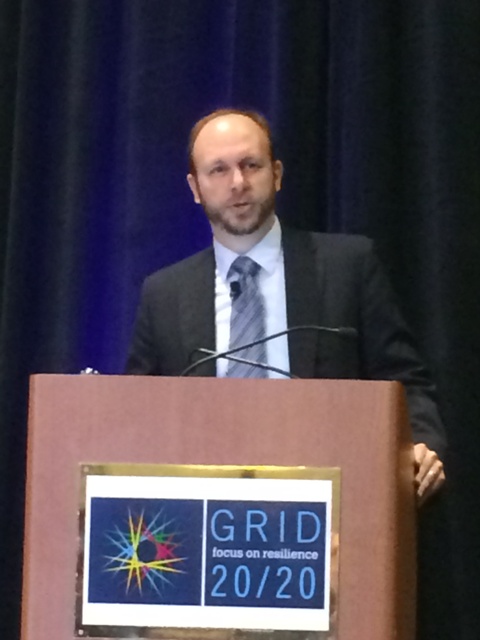Storms and cybersecurity were the subjects as PJM held its third annual Grid 20/20 conference in Philadelphia this week.
PJM CEO Terry Boston and Federal Energy Regulatory Commissioner Cheryl LaFleur kicked off the conference Monday night at the Sheraton Society Hill.
Culture of Resiliency
In keeping with the theme of this year’s conference, LaFleur told an audience of about 100 about the need to create a “culture of resiliency.”
“When there is a problem on the grid, very rarely is it the result of one thing. It’s a succession of mistakes where if you had defense in depth it could have been stopped,” she said. “There has to be a line of sight between what people are doing and the bigger issues…These little thing will add up to the big things.”
In response to question about FERC taking a role in directing the construction of natural gas infrastructure, LaFleur said: “I have an open mind to anything that will work.”
But she added, “I take kind of a Hippocratic Oath: Don’t screw up what was working before you got there.”
‘Takes a Licking’
About 180 people gathered for a daylong session Tuesday.
Boston recalled the old Timex watch commercials in explaining his definition of grid resilience: “It takes a licking and keeps on ticking.” (For those of you too young to remember, here’s a link.)
PJM’s goal, Boston said, is to prevent damage to the grid when possible and reduce damage when not. “We can’t prevent every cascading outage but we certainly are working to do so,” he said.
Former Pennsylvania Governor and Homeland Security Secretary Tom Ridge was the keynote speaker.
Protecting critical infrastructure requires attention from utility CEOs, Ridge said. “Cybersecurity is not an information technology problem, it’s a business risk.”
Scott Aaronson, director of national security policy for the Edison Electric Institute, said government was initially slow to respond to industry requests for help in protecting their assets. “If a plane crashes into a power plant no one would ask you, `where was your Air Force?’” he said.
But he said recent meetings among utility CEOs and senior officials at the Department of Energy, Department of Homeland Security, the FBI and Secret Service have been fruitful. “We did more in the last year than we did in the last six years on government and energy coordination.”
More needs to be done, said Mike Smith, a senior cyber policy advisor at the Department of Energy.
“We can’t continue to issue reports and share PDFs. We’ve got to get to machine-speed” communications.” The concern is not how to get access to more classified information, he said, but how to “share actionable [unclassified] information instantly.”
Hardening Infrastructure
Officials of two utilities talked about their actions to “harden” their systems, which were battered a year ago during Superstorm Sandy.
“It’s a great time to be in the concrete business in New York City,” said John McAvoy, who will take over as president and CEO of Consolidated Edison Inc. in January. “We’re building walls around anything that doesn’t move.”
Frank Czigler, manager of Transmission Strategy & Regional Interface at Public Service Electric & Gas Co. described his company’s proposed $3.9 billion “Energy Strong” storm hardening plan, which is being weighed by the New Jersey Board of Public Utilities.
Miles Keogh, director of grants & research at the National Association of Regulatory Utility Commissioners, said utilities “have a really hard time making a sale” to regulators on the need for such spending. The perception is “it’s just an excuse to raise rates,” he said.



